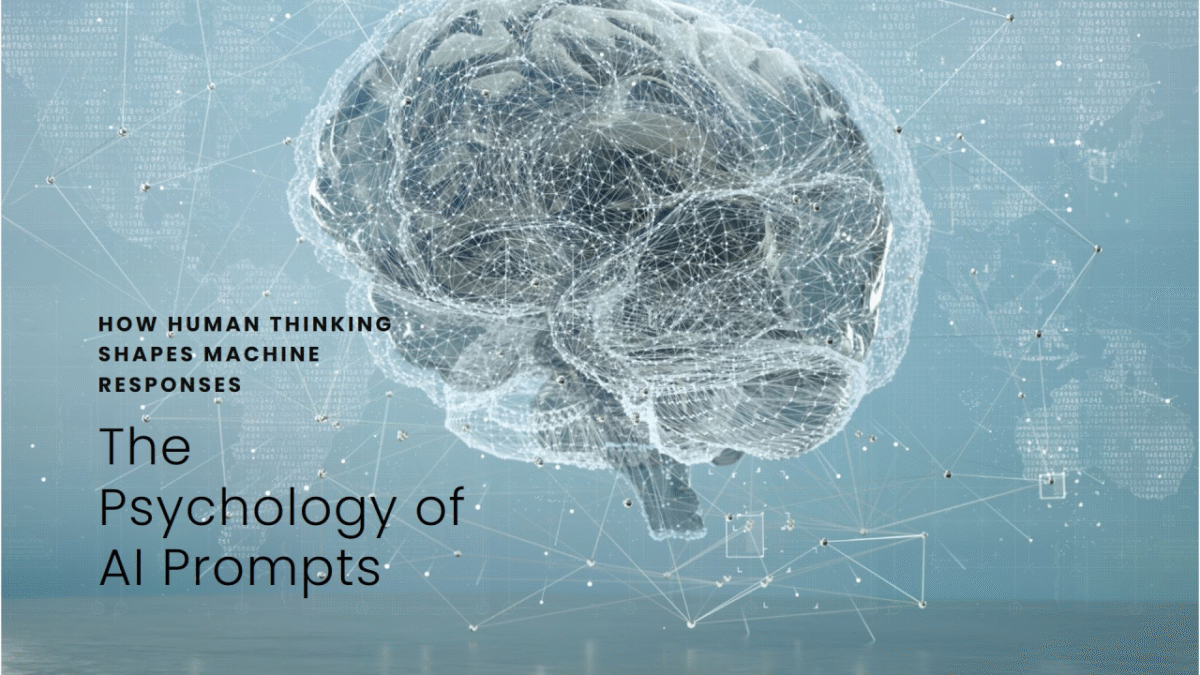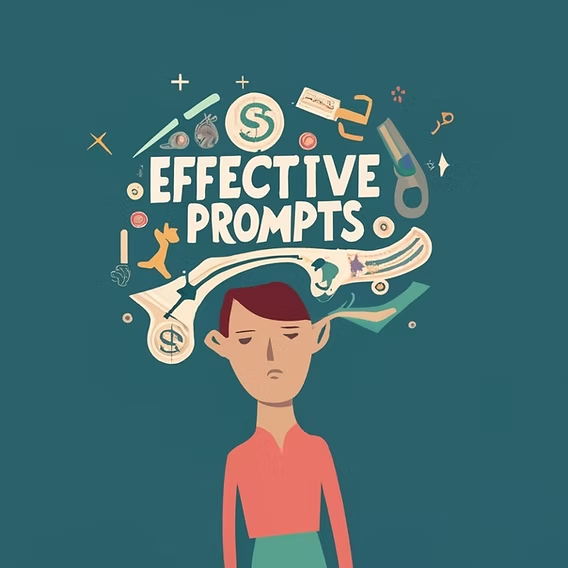✍️ Introduction: Why Some Prompts Work Better Than Others
Ever notice how a tiny change in wording can completely transform an AI’s response? Ask ChatGPT to “write a blog” and you’ll get something bland. Ask it to “write a 1,200-word blog in a friendly, expert tone with practical examples” and suddenly — the output feels sharper, more usable, and closer to what you imagined.
The reason is simple: effective prompts tap into psychology. Behind every great AI prompt lies the same science that guides human communication — clarity, framing, memory, and even persuasion.
In this article, we’ll explore the psychology of AI prompts and share practical tips you can use to design prompts that feel like they were written by a strategist, not a guesser.
🧠 The Psychology of AI Prompts: Core Principles
Understanding why some prompts outperform others starts with these cognitive and behavioral principles:
1. Clarity Reduces Cognitive Load
Just like humans, AI performs better when instructions are specific. Ambiguity increases “decision fatigue,” which often results in vague or generic responses.
✅ Example:
- Weak: “Write me something about productivity.”
- Strong: “Write a 700-word blog post about productivity hacks for remote workers, in a friendly but expert tone, using bullet points and real-life examples.”
2. Framing Shapes Output
The way you frame a request matters. Asking AI to “explain” creates a different tone than asking it to “teach” or “persuade.” Each word sets a psychological expectation that guides the system.
✅ Example:
- “Explain how to use LinkedIn for networking.” → Informational
- “Teach a beginner how to use LinkedIn for networking with step-by-step guidance.” → Instructional
- “Persuade a small business owner to use LinkedIn for networking.” → Persuasive
3. Constraints Spark Creativity
Counterintuitive but true: adding limits often improves creativity. In psychology, this is called the paradox of choice — too many options can lead to weaker results.
✅ Example:
- “Write headlines for a new app.” → Generic
- “Write 5 punchy headlines under 10 words for a fitness app, using humor and urgency.” → Specific and creative
4. Anchoring Provides Context
Just like people rely on reference points, AI benefits from anchors — examples or formats to mimic.
✅ Example:
- “Write a product description for a candle.”
- “Write a product description for a candle in the style of Apple’s product pages: minimal, aspirational, benefits-focused.”

📚 Tips & Tricks: Applying Psychology to Prompt Design
Here’s how you can apply these psychological principles to improve your day-to-day prompting:
Use Behavioral Frameworks
Borrow from proven models like:
- AIDA (Attention, Interest, Desire, Action): For ad copy and marketing prompts.
- Fogg Behavior Model: Great for designing persuasive prompts.
- Storytelling Arcs: Use “problem → struggle → solution” to guide blog or video scripts.

Layer Instructions Strategically
Instead of dumping everything in one long sentence, break prompts into steps:
Role: Act as a senior copywriter.
Task: Write a blog post outline.
Details: Audience is small business owners.
Tone: Friendly and professional.
Constraints: 800–1,000 words, use bullet points where helpful.
This structured approach mirrors how humans process instructions — one cue at a time.
Save & Reuse Your Best Prompts
High-performing prompts are like templates. Don’t reinvent the wheel each time. Tools like My Magic Prompt make it easy to save, organize, and refine them into a personal prompt library.
🛠 How My Magic Prompt Simplifies Prompt Psychology
Applying psychology-based prompt design is powerful — but remembering every framework, constraint, and structure can feel overwhelming. That’s where My Magic Prompt becomes your AI secret weapon:
- ✅ Prompt Builder: Breaks prompts into clear, psychology-backed sections (role, task, tone, constraints).
- ✅ Prompt Templates: Pre-built for copywriting, marketing, SEO, and more — ready to customize.
- ✅ AI Toolkit: Explore advanced prompt frameworks without memorizing them.
- ✅ Chrome Extension (Magic Prompt Chrome Extension): Generate structured prompts right inside your workflow.
It’s like having a behavioral scientist and copy strategist baked into your AI workflow.

📊 Checklist: Psychology-Driven Prompt Design
Use this quick checklist to test if your prompt is well-structured:
- 🎯 Is it clear and specific?
- 🧩 Does it provide context or examples?
- 📏 Have you added constraints (tone, length, format)?
- 🔑 Is it framed to guide the response type (inform, persuade, teach)?
- 📂 Can it be saved/reused for future workflows?
❓ FAQ: Psychology of AI Prompts
Q1: Why does psychology matter in AI prompting?
Because AI mirrors human-like communication. The same psychological principles that make instructions effective for people also guide better AI outputs.
Q2: What’s the difference between a good and bad AI prompt?
Good prompts are clear, contextual, and constraint-driven. Bad prompts are vague, like “write me something.”
Q3: Can constraints really improve creativity?
Yes. In behavioral psychology, constraints reduce overwhelm and spark focused innovation — the same applies to AI.
Q4: How can I organize my best prompts?
Use tools like My Magic Prompt’s prompt library or simple systems like Notion or Google Docs.
Q5: Do I need to be a psychologist to write better prompts?
Not at all. Just applying simple principles like clarity, framing, and constraints will immediately improve your results.
🤍 Final Thoughts
Mastering the psychology of AI prompts is less about memorizing tricks and more about thinking like a strategist. By applying clarity, framing, constraints, and anchoring, you can transform average AI outputs into exceptional ones.
And with tools like My Magic Prompt, you don’t need to carry all these frameworks in your head — they’re built into your workflow. Think of it as your productivity partner, helping you write smarter, faster, and more effectively.

